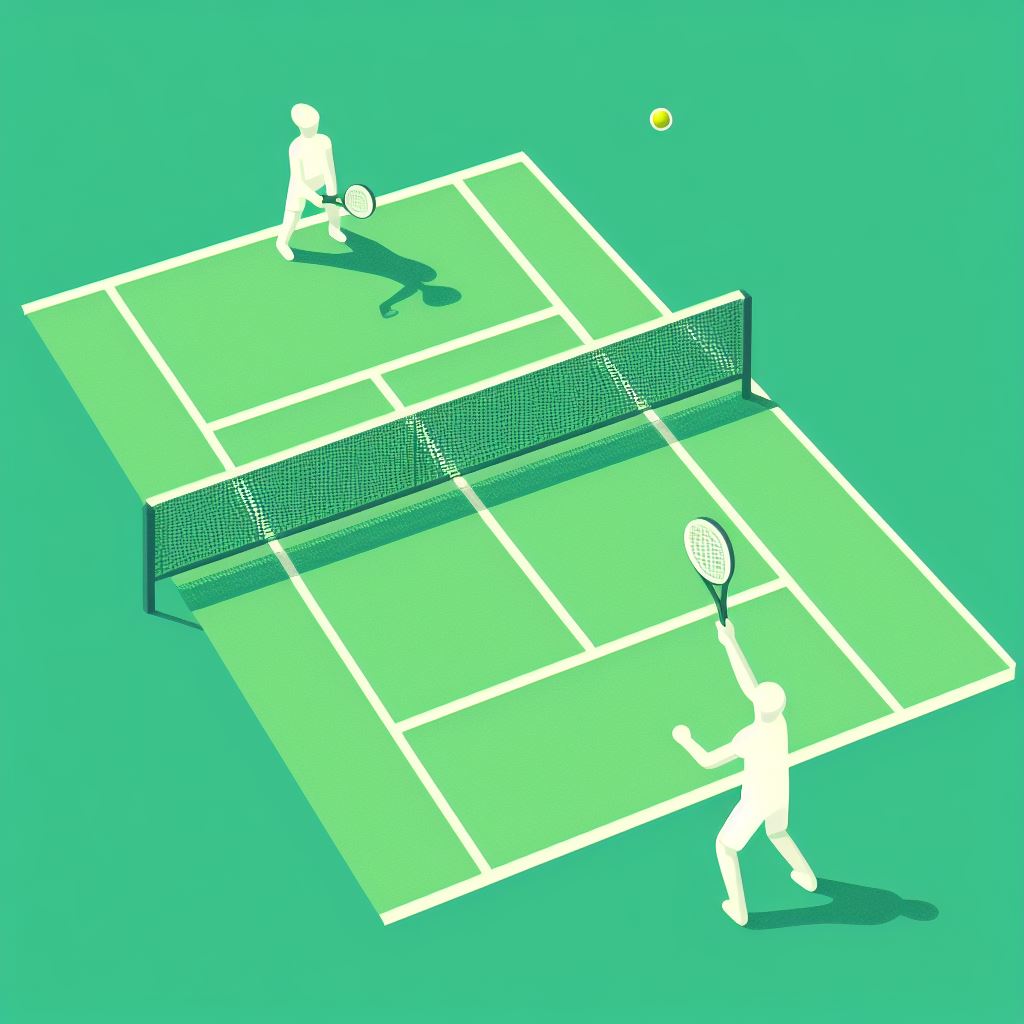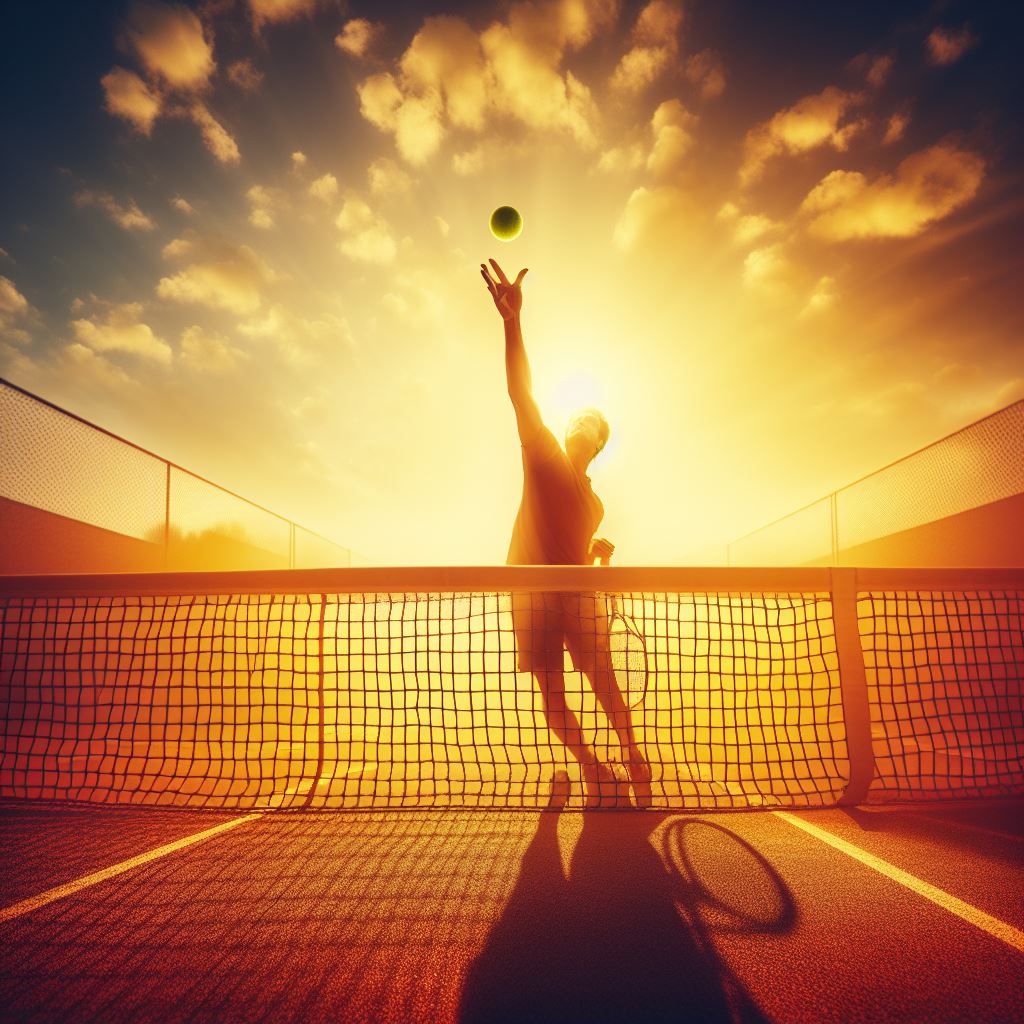Are you a tennis enthusiast who wants to learn the basics of the game, but find yourself overwhelmed by complex terminology and techniques? Look no further.
In this article, we will break down the fundamentals of tennis in a simplified manner, catering to beginners and those seeking a better understanding.
From essential equipment to mastering basic strokes and strategies, we will provide you with the knowledge and tips you need to improve your game and enjoy the sport to the fullest.
Key Takeaways
- Tennis basics include essential equipment such as a tennis racket and proper tennis shoes.
- Understanding the court and scoring system is important, including the dimensions of the court and the traditional and ‘no-ad’ scoring.
- Mastering basic tennis strokes such as the forehand, backhand, serve, volley, and overhead smash is crucial.
- Essential tennis strategies and tactics include different serve techniques, effective doubles strategies, and dominating the net.
Tennis Equipment: What You Need
To play tennis, you will need the essential equipment. Two key items that every tennis player must have are the right tennis racket and proper tennis shoes.
Choosing the right tennis racket is crucial to your game. Rackets come in a variety of sizes, weights, and materials. It’s important to consider your skill level, playing style, and personal preferences when selecting a racket. If you’re a beginner, opt for a racket with a larger head size, as it provides a larger sweet spot and more forgiveness on off-center hits. As you progress, you can transition to a racket with a smaller head size for more control and precision.
Equally important is selecting the proper tennis shoes. Tennis is a sport that involves a lot of lateral movements, so it’s crucial to choose shoes that provide stability and support. Look for shoes with a durable outsole that offers good traction on different court surfaces. Additionally, make sure the shoes fit properly and provide ample cushioning to protect your feet from impact.
Now that you understand the importance of the right racket and shoes, let’s move on to the next section and delve into understanding the court and scoring.
Understanding the Court and Scoring
The court and scoring in tennis are fundamental aspects of the game that every player should understand. To begin with, let’s talk about the tennis court dimensions and layout:
- The tennis court is rectangular in shape, measuring 78 feet long and 27 feet wide for singles matches, and 36 feet wide for doubles matches.
- The court is divided into two equal halves by a net, which stands 3 feet high in the center.
- On each side of the net, there are two service boxes where players serve from, and a baseline at the back of the court.
Moving on to scoring, tennis has different types of scoring systems:
- The most common scoring system is the traditional method, known as ‘advantage scoring.’ In this system, players accumulate points in a game (love, 15, 30, 40), and must win by two clear points.
- Another scoring system is the ‘no-ad’ scoring, commonly used in doubles matches. Here, the first player or team to reach four points wins the game, and if the score reaches deuce (40-40), the next point wins the game.
Understanding the court dimensions and scoring systems in tennis is crucial for playing the game. Knowing these basics will help you navigate the court and keep track of the score, ensuring an enjoyable and competitive match.
Mastering Basic Tennis Strokes
One essential aspect of tennis is gaining proficiency in basic tennis strokes. These fundamental techniques form the foundation of a player’s game and are crucial for success on the court. Mastering these strokes requires a combination of proper technique, footwork, and practice.
To help you better understand and visualize these basic tennis strokes, let’s explore them in a table format:
| Stroke | Description | Common Mistakes |
|---|---|---|
| Forehand | A shot played from the dominant hand side of the body with a forward swing. | Gripping the racquet too tightly, improper follow-through |
| Backhand | A shot played from the non-dominant hand side of the body with a backward swing. | Poor footwork, hitting the ball too late |
| Serve | The shot used to start a point, involving tossing the ball and striking it overhead. | Incorrect grip, lack of leg drive |
| Volley | A shot played before the ball bounces, usually at the net. | Not keeping the racquet head up, improper footwork |
| Overhead Smash | A powerful shot played when the ball is high above the head. | Poor timing, swinging too early or too late |
By focusing on these basic tennis strokes and avoiding common mistakes, you can improve your overall game. Additionally, mastering tennis footwork techniques will enhance your ability to move efficiently around the court, enabling you to reach and strike the ball with precision.
Essential Tennis Strategies and Tactics
Moving from mastering basic tennis strokes, the next crucial step in becoming a skilled tennis player is understanding and implementing essential tennis strategies and tactics. These strategies and tactics are designed to give players a competitive edge on the court and maximize their chances of winning matches.
Here are two key areas to focus on:
- Serve Techniques:
- Mastering different types of serves, such as the flat serve, slice serve, and kick serve, can help you gain control over your service game.
- Learning proper technique, such as using the legs and core to generate power, can improve the speed and accuracy of your serves.
- Doubles Strategies:
- Communication and teamwork are vital in doubles matches. Developing a strong partnership with your doubles partner is crucial for success.
- Understanding and implementing effective doubles strategies, such as positioning, shot selection, and court coverage, can help you dominate the net and control the flow of the match.
Tips for Improving Your Tennis Game
To enhance your tennis game, consider implementing these valuable tips.
Mental preparation is key to staying focused during a match. Before stepping onto the court, take a few moments to clear your mind and visualize yourself playing at your best. Practice mindfulness techniques to help you stay present and focused during the game. Additionally, develop a pre-match routine that includes warming up, stretching, and mentally preparing yourself for the challenges ahead.
Physical conditioning is equally important for improving endurance and agility on the tennis court. Incorporate cardiovascular exercises into your training regimen to build stamina and increase your overall fitness level. Interval training, such as high-intensity sprints followed by recovery periods, can be particularly effective in improving your endurance.
Furthermore, work on improving your agility through exercises that focus on quick movements, footwork, and change of direction. Incorporate ladder drills, cone drills, and lateral movements into your training routine to enhance your agility on the court.
Remember to listen to your body and give it proper rest and recovery. Overtraining can lead to injuries and hinder your progress.
Frequently Asked Questions
How Can I Prevent Tennis Elbow?
To prevent tennis elbow, it is important to incorporate specific exercises and use appropriate equipment. Strengthening the forearm muscles, stretching properly, and using a racket with proper grip size can help reduce the risk of developing this common condition.
What Are the Different Types of Tennis Court Surfaces and How Do They Affect Gameplay?
There are different types of tennis court surfaces, each with its own impact on gameplay. The pros and cons of each surface vary depending on playing style, making it essential to choose the right surface for optimal performance.
Are There Any Specific Warm-Up Exercises That Can Help Improve My Tennis Performance?
In order to improve tennis performance, incorporating warm-up routines and stretching exercises is crucial. These activities help increase flexibility, prevent injuries, and enhance overall physical readiness for a successful game.
Is It Necessary to Have a Coach or Can I Learn Tennis on My Own?
Whether to have a coach or learn tennis on your own depends on your learning style and goals. A coach can provide guidance, feedback, and structured training, while self-teaching allows for flexibility and independence. Both approaches have their merits and can lead to skill development.
What Are Some Common Mistakes Beginners Make and How Can I Avoid Them?
Common mistakes beginners make in tennis include improper grip, lack of footwork, and inconsistent strokes. To avoid these, focus on learning correct technique, practicing regularly, and seeking guidance from experienced players or coaches.
Conclusion
In conclusion, mastering the basics of tennis may seem like a daunting task, but with the right equipment, understanding of the court and scoring, and practice of basic strokes, anyone can improve their game.
By employing essential strategies and tactics, and continuously working on your skills, you can take your tennis game to the next level.
So, why not grab a racket, step onto the court, and let the irony of this seemingly simple sport work its magic?








No Comment! Be the first one.